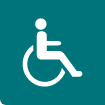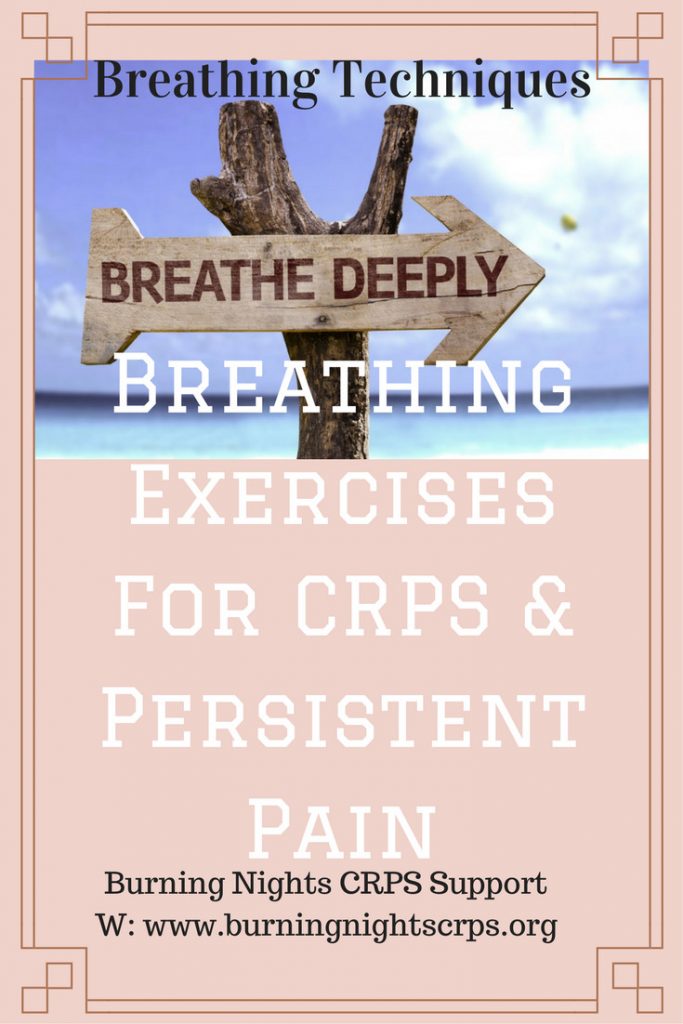We use cookies to improve your experience. By accepting you agree to our cookie policy


The way in which we breathe can be instrumental in how we feel. Learning how to breathe optimally can have positive effects such as reducing blood pressure, supporting the lymphatic system, managing the nervous system and much more. Therefore learning and practicing breathing exercises can be a helpful as a self management tool when you live with Complex Regional Pain Syndrome (CRPS) or chronic pain.
There are many alternative therapies, natural remedies and self management techniques that can help with chronic or persistent pain and conditions such as CRPS, CFS/ME, Fibromyalgia and Arthritis. Here we will explore Breathing Exercises as a form of self pain management and how to use them to help cope with CRPS or chronic pain. Although breathing exercises will not cure your chronic pain or CRPS, they could help get you through the day or help you manage a flare up of your pain or symptoms. Breathing exercises are a good self management tool to have and to know.

If we often breathe shallow upper chest breaths (which may be the case when you have pain) this will affect the nervous system and activate the stress response which may further impact the capacity to breathe well.
As we mentioned in the introduction, regularly practicing breathing exercises, such as those outlined below, not only relax your mind, lessen stress and tension, but will also make you and your brain focus on something totally separate from your pain or flare up.
It’s important to remember that we can focus on our breath and practice breathing exercises anywhere. It’s not meant to be a chore or a challenge.
When you are in a state of frustration, stress, tension or pain your mind and body are not in a sense of relaxation. When you start to slow right down and begin to draw in some deep breaths, the brain and mind begin to slow down and to relax. This then sends a message from the brain to the rest of your body and soon after both the body and mind will become relaxed, your blood pressure will drop, your heart stops racing, and your heavy fast breathing begins to calm down.
It has been found that breathing out engages our ventral vagal system, a part of our parasympathetic nervous system which slows our heart rate and relaxes us. Deep breathing stimulates your blood flow and can help bring more oxygen to your joints and muscles, which can help you with your pain.
Breathing is linked to the autonomic nervous system and practicing breathing every day activates the parasympathetic nervous system. Deep breathing techniques, where you are breathing from your diaphragm rather than shallow breathing from your chest, and meditation that focuses on the breath and eases pain are the best to try. Quick, short shallow breaths from the chest will mean your body is receiving less oxygen, whereas breathing from your diaphragm means your body is receiving more oxygen and you will begin to feel more relaxed.
According to the London Pain Clinic they say that diaphragmatic or deep breathing "... also improves circulation and facilitates the most efficient exchange of oxygen and carbon dioxide with the minimum amount of effort."
These types of techniques ease tension in the muscles and allow more even blood flow through to the extremities. The soothing power of the breath or heart beat can let you ignore thoughts of pain. (RSD Attorney)
The sympathetic and parasympathetic nervous systems (SNS and PNS) affect breathing in different ways, and breathing can be used to influence the activity of these systems.
Your body has two key systems that manage how you respond to stress and relaxation. The sympathetic nervous system (SNS) is responsible for your stress response, helping you react to challenges. Have a read of our artilce on 6 top tips to manage stress.
On the other hand, the parasympathetic nervous system helps your body rest and relax. When one of these systems is active, the other takes a backseat, allowing your body to focus on either stress or relaxation.
In a research article by Busch, V et al (2012), where they studied the Deep and Slow Breathing techniques in relation to chronic pain perception, they found that: "… the way of breathing decisively influences autonomic and pain processing, thereby identifying DSB in concert with relaxation as the essential feature in the modulation of sympathetic arousal and pain perception."
The exercises outlined on this page can be varied at any time to suit you, where you are or what you're doing. If you feel dizzy or light-headed when doing the breathing exercises, return your breathing to it's normal rhythm. You can add some gentle music, light some softly scented candles, or put out some fresh flowers or aromatherapy oils in an oil burner to help you to relax. These sounds and smells can improve your breathing, reduce the stress and tension, and hopefully help your chronic pain or flare up.
Remember that over breathing or forcing can lead to feeling dizzy or lightheaded, so take it steadily at first and graually build up.
Bookspan, J. in her article 'Do breathing exercises work?' says: "Don't "overbreathe" (hyperventilate) by taking huge breaths in and out while at rest. That changes your body chemistry, which can make you dizzy or cause temporary limb tingling."
There are many exercises that can be used, but whichever you decide, remember that learning breathing exercises will take a little practice and getting used to as it may feel unnatural, but stay with it to try and remove your attention away from your pain.

Deep Breathing can be of great benefit for a good many areas of your life, including:
For all these breathing exercises, it’s good to remember that it’s absolutely fine to sit on a chair, propped up in bed, or even lying down so choose what works best for you.
Equal breathing can have a balancing and calming effect. If practiced using a count, a mantra, or a gentle hand movement it can also distract the mind from other things (perhaps your pain) by creating another point of focus. Follow the intructions above for comfortable deep breathing until you have settled into awareness of your breath.
Instead of, or in addition to using either of the above techniques, you may want to open and close your fingers.
Lengthening the exhalation can be a quick way to help activate the parasympathetic response in the nervous system. This is the part of the nervous system often referred to as ‘rest and digest or tend and befriend’. When the PNS is activated, we are likely to feel calmer and more settled.
This breathing exercise uses a gentle exhale through the mouth, which naturally helps you breathe out for longer and can leave you feeling calmer and more at ease.
Find a comfortable position preferably with an upright spine (but if lying down works better for you, this is also fine).
Breathe in through your nose taking a comfortable breath.
Purse your lips, creating a small circle and breathe out gently through the mouth.
You might imagine that as you are breathing out, a golden thread is slowly releasing and swirling slowly out from your mouth, perhaps taking away with it any discomfort or worry.
This is a breath practice you may work up to over time as it can feel like a long count at first.
The aim is to breathe as in the equal breath outlined above, but working with a ratio of a count of 6 on the inhalation and 6 on the exhalation.
Breathe in through the nose, counting 1 – 6.
Breathe out through the nose, counting 1 - 6.
There is lots of research supporting the numerous positive benefits of this way of breathing. Just a few examples are improved heart health, increased cognitive flexibility, improved emotional regulation, reduced muscular tension and improved sleep.
This isn't a breath practice as such, but useful nonetheless for the relief of both mental or physical tension and self regulation, if you are feeling agitated or anxious.
In this self management article, you will have hopefully learned how to use deep breathing exercises to help you cope with your CRPS or persistent pain.
There are many more exercises and techniques for CRPS and persistent pain available, but always remember to contact your pain management team, GP or other medical professional before trying anything new or different to your current medical regime for your specific condition.
Please do have a read of our other articles, including:
Burning Nights CRPS Support is a registered charity. We are not doctors or specialists and therefore cannot make any diagnosis, provide treatment, etc. You must speak to your doctor or healthcare professional about starting to do any exercises including breathing techniques. This help is not meant to replace your current treatment regime or medication. If in doubt please contact your doctor or pain specialist first.
Last Updated:31/08/2025
We use cookies to improve your experience. By accepting you agree to our cookie policy
 £
£